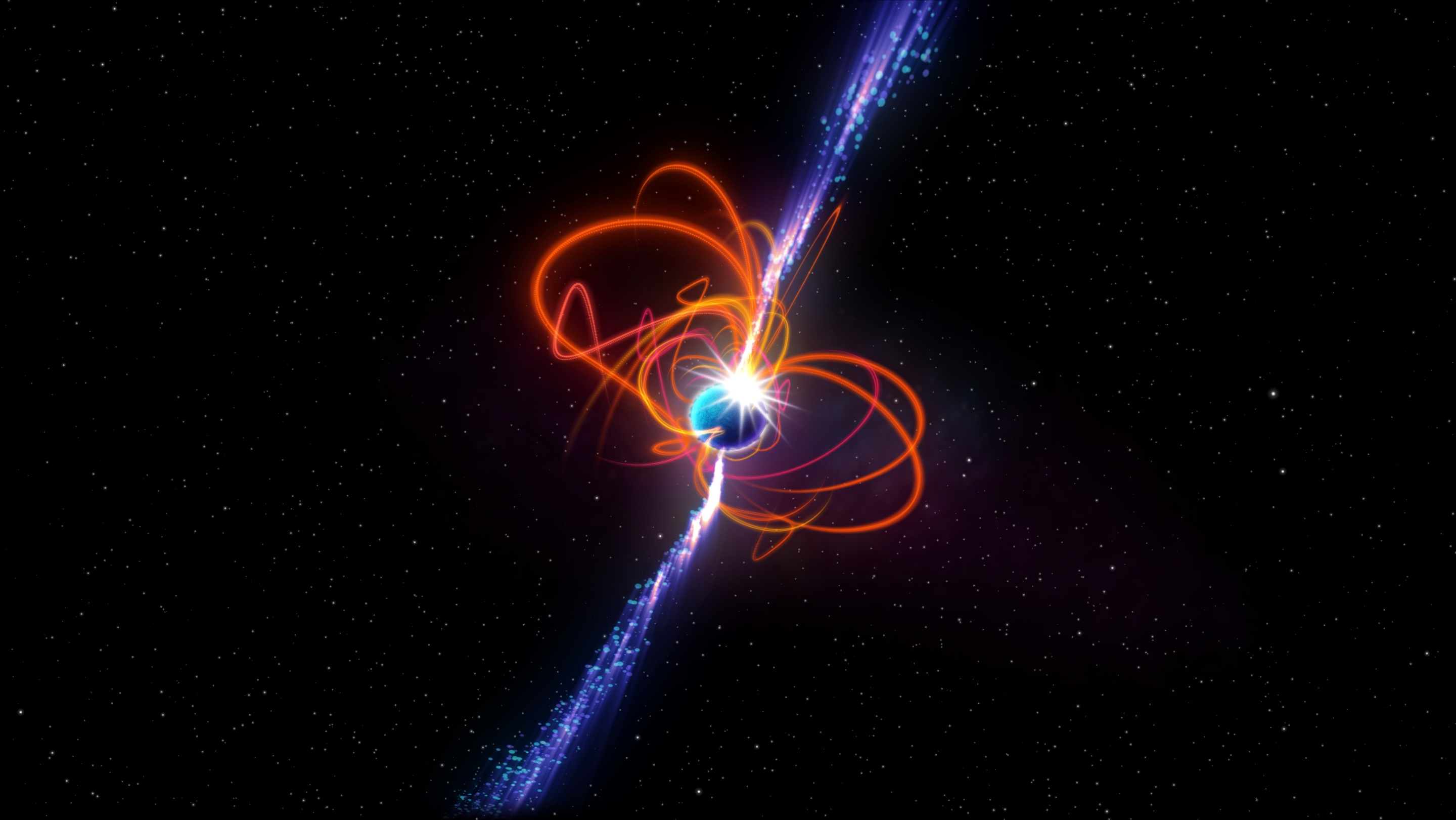Media release
From:
Date: Wed 19 July 2023
Start Time: 10:00am AEST
Duration: Approx 45 min
Venue: Online - Zoom
Speaker:
- Dr Natasha Hurley-Walker - Senior Lecturer at the Curtin University node of the International Centre for Radio Astronomy Research, (ICRAR)
---------------------------
Hiding in plain sight, astronomers find new type of stellar object
An international team led by astronomers from the Curtin University node of the International Centre for Radio Astronomy Research (ICRAR) has discovered a new type of stellar object that challenges our understanding of the physics of neutron stars.
The object could be an ultra-long period magnetar, a rare type of star with extremely strong magnetic fields that can produce powerful bursts of energy.
Until recently, all known magnetars released energy at intervals ranging from a few seconds to a few minutes. The newly discovered object emits radio waves every 22 minutes, making it the longest period magnetar ever detected.
The research was published today in the journal Nature.
Astronomers discovered the object using the Murchison Widefield Array (MWA), a radio telescope on Wajarri Yamaji Country in outback Western Australia.
Lead author Dr Natasha Hurley-Walker said the magnetar, named GPM J1839−10, is 15,000 light-years away from Earth in the Scutum constellation.
"This remarkable object challenges our understanding of neutron stars and magnetars, which are some of the most exotic and extreme objects in the Universe," she said.
The stellar object is only the second of its kind ever detected after the first was discovered by Curtin University undergraduate research student Tyrone O'Doherty.
Initially, scientists could not explain what they had found.
They published a paper in Nature in January 2022 describing an enigmatic transient object that would intermittently appear and disappear, emitting powerful beams of energy three times per hour.
Dr Hurley-Walker—O'Doherty's honours supervisor—said the first object took us by surprise.
"We were stumped," she said. "So we started searching for similar objects to find out if it was an isolated event or just the tip of the iceberg."
Between July and September 2022, the team scanned the skies using the MWA telescope.
They soon found what they were looking for in GPM J1839−10.
It emits bursts of energy that last up to five minutes—five times longer than the first object.
Other telescopes followed up to confirm the discovery and learn more about the object's unique characteristics.
These included three CSIRO radio telescopes in Australia, the MeerKAT radio telescope in South Africa, the Grantecan (GTC) 10m telescope, and the XMM-Newton space telescope.
Armed with GPM J1839−10's celestial coordinates and characteristics, the team also began searching the observational archives of the world's premier radio telescopes.
"It showed up in observations by the Giant Metrewave Radio Telescope (GMRT) in India, and the Very Large Array (VLA) in the USA had observations dating as far back as 1988," she said.
"That was quite an incredible moment for me. I was five years old when our telescopes first recorded pulses from this object, but no one noticed it, and it stayed hidden in the data for 33 years.
"They missed it because they hadn't expected to find anything like it."
Not all magnetars produce radio waves. Some exist below the 'death line', a critical threshold where a star's magnetic field becomes too weak to generate high-energy emissions.
"The object we've discovered is spinning way too slowly to produce radio waves—it's below the death line," Dr Hurley-Walker said.
"Assuming it’s a magnetar, it shouldn't be possible for this object to produce radio waves. But we’re seeing them.
"And we're not just talking about a little blip of radio emission.
"Every 22 minutes, it emits a five-minute pulse of radio wavelength energy, and it's been doing that for at least 33 years.
"Whatever mechanism is behind this is extraordinary."
The discovery has important implications for our understanding of the physics of neutron stars and the behaviour of magnetic fields in extreme environments.
It also raises new questions about the formation and evolution of magnetars and could shed light on the origin of mysterious phenomena such as fast radio bursts.
The research team plans to conduct further observations of the magnetar to learn more about its properties and behaviour.
They also hope to discover more of these enigmatic objects in the future, to determine whether they are indeed ultra-long period magnetars, or something even more phenomenal.
The MWA is a precursor to the world's largest radio astronomy observatory, the Square Kilometre Array, which is under construction in Australia and South Africa. The MWA celebrates a significant milestone this year as it completes a decade of operations and international scientific discovery.
____________________
We acknowledge the Wajarri Yamaji as the Traditional Owners and native title holders of Inyarrimanha Ilgari Bundara, the CSIRO Murchison Radio-astronomy Observatory site where the Murchison Widefield Array is located.
The Pawsey Supercomputing Research Centre in Perth–a Tier 1 publicly funded national supercomputing facility–helped store and process the MWA observations used in this research.
Multimedia






 Australia; NSW; WA
Australia; NSW; WA



